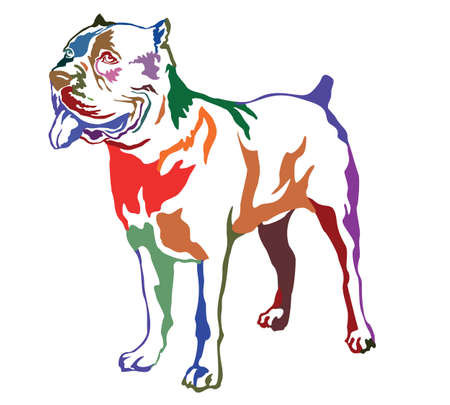Understanding Animal Cruelty in the Indian Context
Animal cruelty in India is a complex issue shaped by the nation’s diverse cultural, religious, and social fabric. The forms of cruelty range from overt acts such as beating, abandonment, and illegal animal fights, to more subtle neglect like denying food, shelter, or veterinary care. Despite constitutional provisions and laws such as the Prevention of Cruelty to Animals Act, 1960, incidents continue to surface across urban and rural areas.
Prevalent Forms of Animal Cruelty
In recent years, several high-profile cases have brought attention to extreme acts of violence against animals—ranging from stray dogs being poisoned in Kerala to the tragic case of a pregnant elephant killed by explosive-laden fruit in Kerala. Other frequent occurrences include illegal cattle transport, neglect in dairy farms, exploitation of working animals like bullocks and horses, and abuse towards community dogs and cats.
Cultural and Social Influences
India’s cultural landscape is deeply influenced by religious beliefs that often promote compassion towards animals—such as Ahimsa in Jainism and vegetarian practices among Hindus. However, these ideals coexist with traditions that may inadvertently perpetuate cruelty. For example, festivals involving animal sacrifice or sports like Jallikattu (bull-taming) are defended on cultural grounds despite their impact on animal welfare. Rapid urbanisation also contributes to increased cases of pet abandonment and mistreatment of strays.
Recent Cases Shaping Public Discourse
Social media has played a pivotal role in bringing animal cruelty to mainstream attention. Viral videos and citizen activism have led to greater awareness and calls for stricter enforcement of existing laws. Yet, gaps remain between legal frameworks and actual practice due to lack of resources, education, and at times societal indifference.
The pain caused by animal cruelty in India thus reflects not only individual actions but also broader societal attitudes, underlining the need for comprehensive understanding and intervention at multiple levels.
2. Psychological Impact on Perpetrators and Society
Animal cruelty is not just an act of physical harm; it leaves deep psychological scars on both perpetrators and the wider Indian society. Understanding these mental health aspects is crucial for addressing the roots of such behaviour and the ripple effects it creates in communities across India.
Impact on Perpetrators
Studies in India have shown that individuals who engage in animal cruelty often exhibit underlying psychological issues such as anger, frustration, or a lack of empathy—traits that may stem from adverse childhood experiences or environmental influences. In many cases, cruelty to animals can be an early indicator of potential violent tendencies towards humans. This connection has been acknowledged by Indian psychologists and law enforcement agencies alike, who note that addressing these behaviours early can prevent escalation into more serious crimes.
Common Mental Health Issues Observed
| Issue | Description | Relevance in Indian Context |
|---|---|---|
| Lack of Empathy | Inability to understand or share the feelings of animals or people. | Often observed among youth exposed to violence or neglect in joint family systems. |
| Impulse Control Disorders | Difficulties in controlling aggressive impulses leading to harm. | Cases reported in urban slums where stressors are high. |
| Desensitisation | Repeated exposure leading to emotional numbness towards suffering. | Seen in regions where animal abuse is normalised for traditional practices. |
Broader Effects on Public Psyche
The trauma resulting from witnessing animal cruelty extends far beyond those directly involved. In Indian neighbourhoods, especially where children are present, such incidents can lead to heightened anxiety, fear, and mistrust within the community. The normalisation of animal abuse—whether through street dog beatings, illegal wildlife trade, or neglect of cattle—erodes societal values and contributes to a cycle of apathy. Moreover, Indian culture, which traditionally reveres animals like cows and elephants, experiences cognitive dissonance when acts of cruelty contradict these beliefs.
Mental Health Consequences Among Different Groups
| Group Affected | Mental Health Effect | Cultural Context Example |
|---|---|---|
| Children & Youth | Anxiety, nightmares, behavioural changes | Witnessing cruelty towards community dogs during festivals. |
| Elderly Residents | Sadness, helplessness, loss of faith in community values | Seeing sacred cows mistreated in urban areas. |
| Animal Welfare Workers | Compassion fatigue, burnout, secondary trauma | Frequent exposure while rescuing abused animals from streets. |
Towards a Compassionate Indian Society
Tackling the psychological impact of animal cruelty requires a multipronged approach: mental health interventions for offenders, awareness programmes for citizens, and reinforcement of Indias rich tradition of compassion towards all living beings. By recognising and addressing these psychological consequences at both individual and societal levels, India can pave the way for more humane communities where respect for animal life is integral to public well-being.

3. Social Dynamics and Community Response
In India, the social perception of animal cruelty is deeply influenced by religious beliefs, traditional practices, and regional cultural values. For many communities, animals are considered sacred or integral to daily life. However, despite this reverence, incidents of animal cruelty still occur, sometimes due to ignorance, economic hardship, or cultural misunderstandings. The response from local communities often varies: in rural areas, some cases may go unreported due to lack of awareness or fear of social repercussions, while urban populations tend to be more proactive thanks to better access to information and advocacy groups.
The Role of Social Media in Shaping Awareness
Social media platforms like WhatsApp, Facebook, and Instagram have become powerful tools in raising awareness about animal cruelty across India. Viral videos and posts highlighting abuse can spark nationwide outrage within hours. Indian netizens frequently use trending hashtags like #JusticeForAnimals and #StopAnimalCruelty to demand action from authorities. This digital activism not only pressures law enforcement but also educates the public about the importance of animal welfare.
NGOs and Grassroots Movements
Numerous Indian NGOs such as People for Animals (PFA), Blue Cross of India, and Animal Aid Unlimited play a critical role in combating animal cruelty. These organizations conduct rescue operations, provide medical care, and run educational campaigns in schools and communities. Their grassroots approach helps bridge the gap between legal frameworks and actual community behaviour. Collaboration with local leaders and influencers ensures that their message resonates even in remote villages.
Community-Led Solutions
Effective solutions often arise from within the community itself. Neighbourhood watch groups, school clubs, and temple committees have begun initiating efforts to protect stray animals and promote humane treatment. In some cities like Bengaluru and Mumbai, residents collaborate with municipal authorities to implement sterilization drives for street dogs or set up feeding stations during festivals. By embracing a collective responsibility model—‘sab ka saath’ (everyone together)—Indian society demonstrates that sustainable change is possible when all stakeholders are involved.
4. Moral and Ethical Considerations in Indian Society
Indias approach to animal welfare is deeply rooted in its moral and ethical traditions, shaped by centuries-old religious values and philosophical systems. The concept of ahimsa, or non-violence, has been a cornerstone of Hinduism, Buddhism, and Jainism. These philosophies advocate compassion towards all living beings, influencing the societal perspective on animal rights. However, the practical application of these teachings varies greatly across different regions and communities.
Religious Teachings and Animal Compassion
In Indian culture, many animals hold sacred status—cows are revered in Hinduism, elephants are associated with Lord Ganesha, and several birds and animals feature prominently in mythology. Such reverence often translates into protective attitudes towards these species. However, contradictions exist: while certain animals receive high regard, others may not benefit from the same level of empathy or care.
| Religion/Philosophy | Core Value | Approach to Animals |
|---|---|---|
| Hinduism | Ahimsa (Non-violence) | Cows are sacred; vegetarianism promoted; some ritual sacrifices still practiced regionally |
| Buddhism | Compassion for all sentient beings | Discourages harm to any living creature; promotes peaceful coexistence |
| Jainism | Extreme non-violence (Ahimsa Paramo Dharma) | Strict vegetarianism; active avoidance of harm to even the smallest life forms |
| Sikhism | Respect for God’s creation | Moderate stance; encourages kindness but not strict vegetarianism for all followers |
Moral Dilemmas and Social Realities
Despite these rich ethical frameworks, social realities sometimes lead to apathy or neglect towards animal suffering. Economic pressures, urbanization, and lack of awareness can overshadow traditional values. For example, street animals often face harsh conditions due to a combination of resource constraints and changing societal priorities. This creates a moral dilemma: while many Indians express sympathy for animals in principle, translating this compassion into action is often hindered by practical limitations.
Factors Influencing Attitudes Towards Animals in India:
- Cultural Context: Reverence for certain species vs. indifference or fear towards others.
- Religious Practice: Rituals may sometimes conflict with modern animal welfare perspectives.
- Education & Awareness: Knowledge gaps about animal rights impact behaviour at the grassroots level.
- Economic Pressures: Livelihood concerns can override moral considerations in daily life.
The Path Forward: Strengthening Compassion in Practice
The challenge lies in bridging the gap between Indias profound moral teachings and everyday practices concerning animals. Emphasizing humane education, updating legal protections, and integrating traditional values with contemporary ethics are crucial steps toward fostering a more compassionate society that reflects both Indias heritage and its aspirations for progress.
5. Legal Framework and Enforcement Challenges
Overview of Indian Animal Protection Laws
India has a comprehensive legal framework aimed at protecting animal welfare. The Prevention of Cruelty to Animals Act, 1960, is the cornerstone legislation that prohibits unnecessary pain or suffering to animals. In addition, the Wildlife Protection Act, 1972, safeguards wild animals from poaching and exploitation. Various state-level rules and local municipal laws further supplement these central acts, reflecting India’s cultural respect for animal life rooted in values like ahimsa (non-violence).
Barriers in Enforcement
Despite robust laws on paper, enforcement remains a significant challenge. Many cases of cruelty go unreported due to lack of awareness or fear of social backlash. Law enforcement agencies often lack dedicated resources, training, and sensitivity towards animal rights issues. In rural areas, traditional practices sometimes clash with modern legal standards, making consistent enforcement difficult. Corruption and lengthy judicial processes further weaken the deterrent effect of existing laws.
Public Awareness and Responsibilities
Public knowledge about animal protection laws is still relatively low across much of India. Many citizens are unaware that acts like abandoning pets or inflicting pain on street animals are punishable offences. While NGOs and activists have made progress in urban centres through campaigns and workshops, there is a pressing need for widespread educational initiatives in schools and communities. Increased awareness can empower citizens to report incidents and demand action from authorities, fostering a culture where kindness towards animals is not just a moral duty but also a legal responsibility.
The Way Forward
Strengthening animal welfare in India requires both stricter law enforcement and greater public participation. Government agencies must invest in training police personnel and setting up dedicated helplines for reporting cruelty. At the same time, educational outreach should highlight both rights and responsibilities under the law. Only then can India’s legal framework truly translate into everyday compassion and protection for its animals.
6. Pathways Towards Change: Education and Advocacy
Empowering Communities through Grassroots Movements
India has witnessed several grassroots movements that have played a pivotal role in combating animal cruelty. Organisations such as People for Animals (PFA) and Blue Cross of India have mobilised local communities, encouraging individuals to become active participants in animal welfare. These groups leverage traditional community networks, local languages, and culturally resonant messaging to reach people from all walks of life. For example, the ‘Stray Dog Feeding Drives’ in metropolitan cities like Bengaluru and Mumbai not only provide sustenance to animals but also foster compassion among citizens. Such movements demonstrate how collective efforts at the ground level can challenge social norms and bring about tangible improvements.
Educational Initiatives: Sowing Seeds of Compassion
Education is increasingly recognised as a long-term solution to address the root causes of animal cruelty in India. Innovative school programmes such as the Humane Education curriculum by Compassionate Citizens introduce children to animal rights concepts using stories, games, and discussions relevant to Indian contexts. Colleges and universities are also incorporating animal welfare modules into their syllabi, nurturing a new generation of empathetic leaders. Moreover, public awareness campaigns conducted in vernacular languages ensure that even those from rural or less-privileged backgrounds understand the importance of humane treatment towards animals.
Emerging Trends: Technology and Social Media Advocacy
The rapid proliferation of smartphones and internet access has enabled activists to amplify their message across India. Social media platforms like Instagram, Facebook, and WhatsApp are used extensively to share rescue stories, expose instances of cruelty, and organise petitions targeting legislative reforms. Hashtags such as #BeKindToAnimals and viral video content have made animal welfare a mainstream topic among urban youth. Additionally, several mobile apps now allow users to report cases of cruelty instantly to nearby shelters or authorities, making intervention faster and more efficient.
Cultural Resonance: Bridging Traditions with Modern Values
Effective advocacy in India often intertwines with cultural narratives. Campaigns frequently reference ancient Indian philosophies like ‘ahimsa’ (non-violence) found in Hinduism, Buddhism, and Jainism. By framing animal protection as part of Indias rich moral heritage, advocates make their message relatable while appealing to both modern values and traditional beliefs. This approach ensures a wider acceptance across diverse communities—from metro cities to rural heartlands.
In conclusion, the journey toward eradicating animal cruelty in India is being shaped by dynamic education initiatives, grassroots activism, digital advocacy, and culturally sensitive messaging. While challenges remain, these pathways reflect a growing movement that is transforming attitudes and building a more compassionate society for both animals and people alike.


